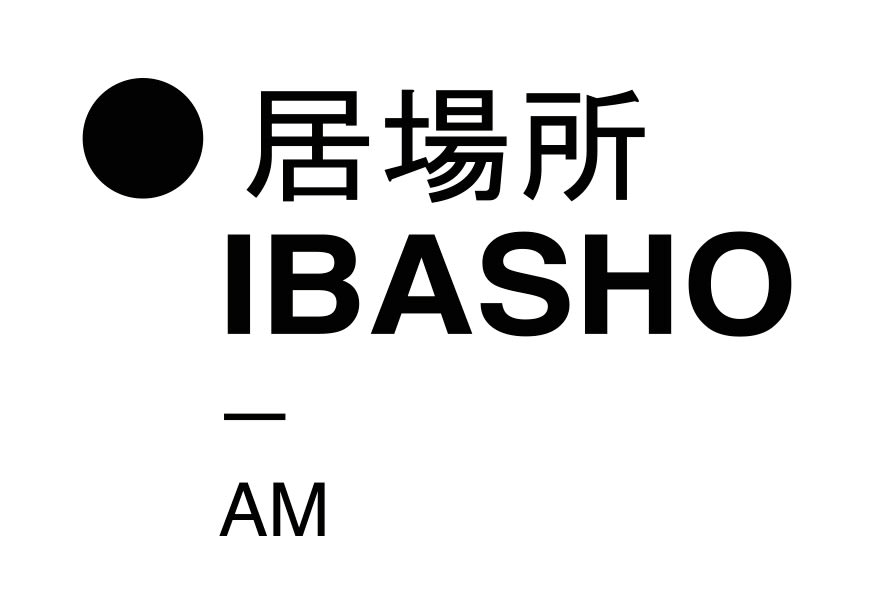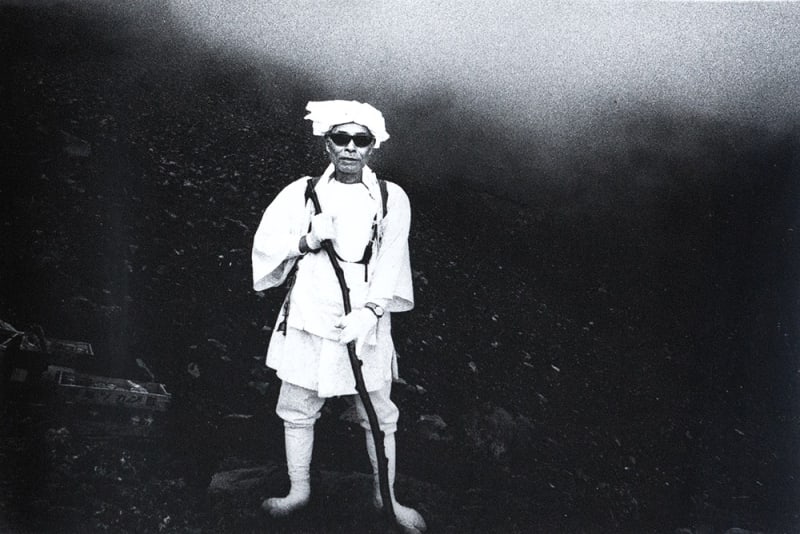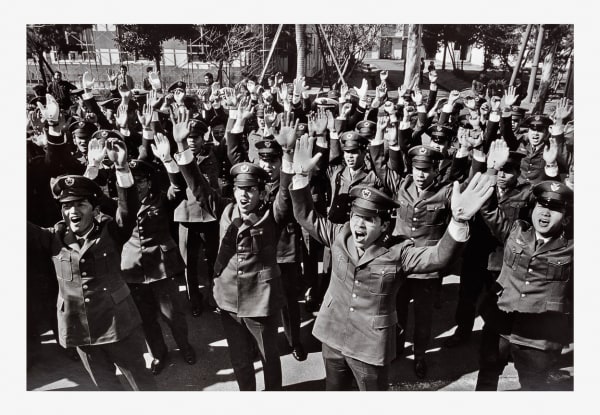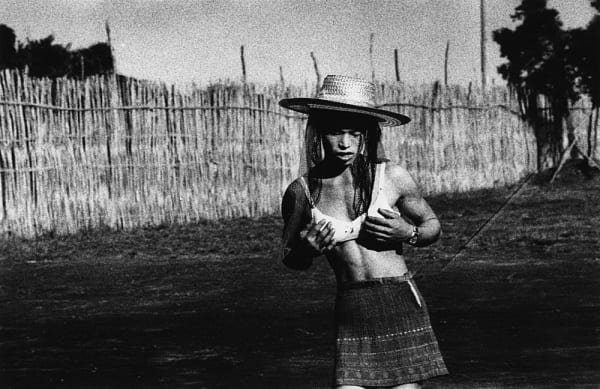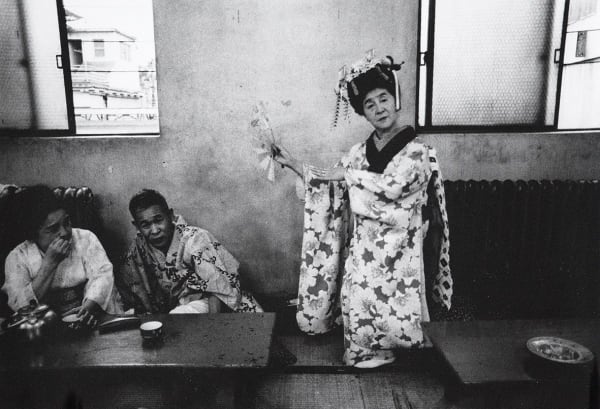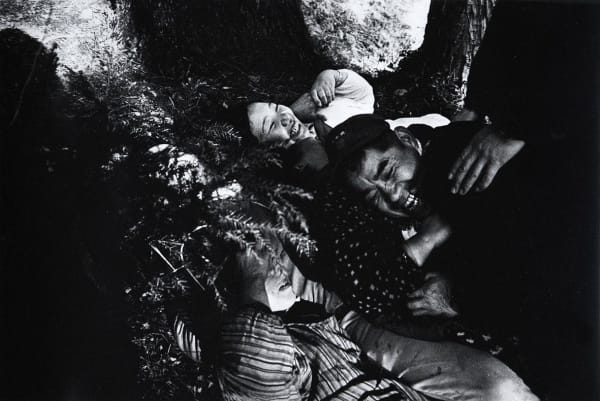Hiromi Tsuchida
Born in Fukui Prefecture in 1939, Hiromi Tsuchida studied engineering before enrolling in the Tokyo College of Photography in 1965 where he was later to return as a professor. He became a freelance photographer in 1971. Tsuchida began to receive recognition for his work early in his career with his first solo exhibition 'Autistic Space' at Nikon Salon in Ginza, Tokyo in 1971 and was included in the seminal 1974 exhibition 'New Japanese Photography' at MoMA in New York. His first publication 'Zokushin' (Gods of the Earth, 1976) won high praise and became the subject of national and international (Amsterdam, 1978) exhibitions. Other acclaimed series include 'Counting Grains of Sand' (1976-89) and his several projects on Hiroshima ('Hiroshima 1945-1978', with portraits of the victims; 'Hiroshima Monument', 1979; 'Testimonies of Hiroshima', 1982; Hiroshima Collection, 1995).
In 2007, the retrospective 'Hiromi Tsuchida's Japan' was held at the Tokyo Metropolitan Museum of Photography for which he received the 27th Annual Ken Domon Award. His works can be found in, among others, the Tokyo Photographic Art Museum, the Centre Pompidou in Paris, the Bibliothèque nationale de France in Paris, the MoMA in New York, the San Francisco Museum of Modern Art and the J. Paul Getty Museum in Los Angeles.
Hiroshima Collection:
These photographs that will be exhibited at Paris Photo Prismes are from Hiromi Tsuchida's project entailing a profound exploration of the impact of the atomic bomb in Hiroshima. Tsuchida started photographing objects from the Hiroshima Peace Memorial Museum 37 years after the bomb, returning for a second time in 1995 to continue the series. Tsuchida has stated that 'the event at Hiroshima did not end in 1945; but began a new historical era leading toward the 21st century.' Neither Tsuchida nor his family were present at the explosion, however it is this gap between experiencing the explosion and encountering the traces of it that his work explores. He has photographed the victim's personal belongings as a 'documentarian'. This neutrality is evident from the simple presentation of each personal object, accompanied by a note about its owner and their distance from the hypocentre at the moment of the atomic blast, 8:15 a.m. on 6 August 1945. As museum artefacts, these ordinary things have been called upon to represent the devastating impact of the bomb. They might also be seen as stand-ins for their owners, making Tsuchida's work a form of posthumous portraiture. In 1985 Tsuchida's photos of Hiroshima travelled throughout Japan and abroad in an exhibition sponsored by UNESCO.
-
 Inagi Chuo Park, Inagi (Counting Grains of Sand), 1981
Inagi Chuo Park, Inagi (Counting Grains of Sand), 1981 -
 Hashirimizu, Yokosuka (Counting Grains of Sand), 1981
Hashirimizu, Yokosuka (Counting Grains of Sand), 1981 -
 Hachimangu, Kamakura (Counting Grains of Sand), 1981
Hachimangu, Kamakura (Counting Grains of Sand), 1981 -
 Asahi, Yokohama (Counting Grains of Sand), 1979-1981
Asahi, Yokohama (Counting Grains of Sand), 1979-1981 -
 Tanegashima, Kogashima (Zokushin), 1973
Tanegashima, Kogashima (Zokushin), 1973 -
 Toba, Mie Pref (Zokushin), 1972
Toba, Mie Pref (Zokushin), 1972 -
 Ise Jingu, Mie Shrine (Zokushin), 1972
Ise Jingu, Mie Shrine (Zokushin), 1972 -
 Hirosaki, Aomori Pref. (Zokushin), 1970
Hirosaki, Aomori Pref. (Zokushin), 1970 -
 Asakusa, Tokyo (Zokushin), 1970
Asakusa, Tokyo (Zokushin), 1970 -
 Isshiki-Kurosawa, Aichi Pref (Zokushin), 1969
Isshiki-Kurosawa, Aichi Pref (Zokushin), 1969
-
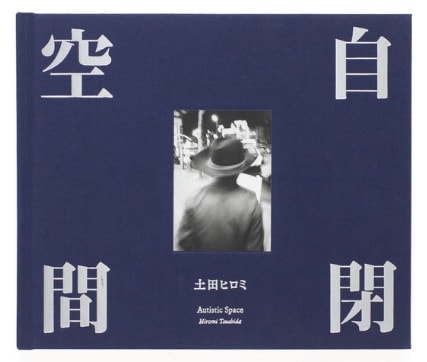
Autistic Space - Hiromi Tsuchida
Tsuchida, Hiromi, 2018hardcover, 96 pagesRead more
Publisher: Zen Foto Gallery
Dimensions: 225 x 264 mm -

Counting Grains of Sand, 1976-1989 - Hiromi Tsuchida
Tsuchida Hiromi, 1990hardcover with dust jacket, 115 pagesRead more
Publisher: Toseisha
ISBN: 4924725056
Dimensions: 266 × 346mm -

CURIOUS EYES FOR MAN - Through the Eyes of 31 Photographers
人間への好奇心 Yamagami, Shojisoftcover, 32 pagesRead more
Publisher: Shoji Yamagami
Dimensions: 210 x 150 mm -
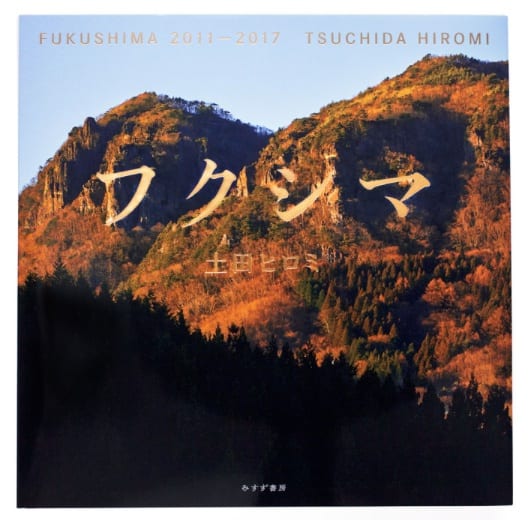
Fukushima 2011-2017 - Hiromi Tsuchida
Tsuchida, Hiromi, 2018hardcover with dust jacket and obi, 196 pagesRead more
Publisher: Misuzu Shobo
Dimensions: 298 x 298 mm
-

Hiroshima Monument II - Hiromi Tsuchida
Hiromi Tsuchida, 1995hardcover with dust jacket , 114 pagesRead more
Publisher: Tosei-sha
Dimensions: 262 x 268 mm -

Looking Back: 10 Years of IBASHO
Exhibition catalogue various artist, 2025softcoverRead more
Publisher: IBASHO
Dimensions: 230 x 240 mm -

New Japanese photography
Various artists, 1974softcover, 120 pagesRead more
Publisher: The Museum of Modern Art
Dimensions: 253 x 230 mm -
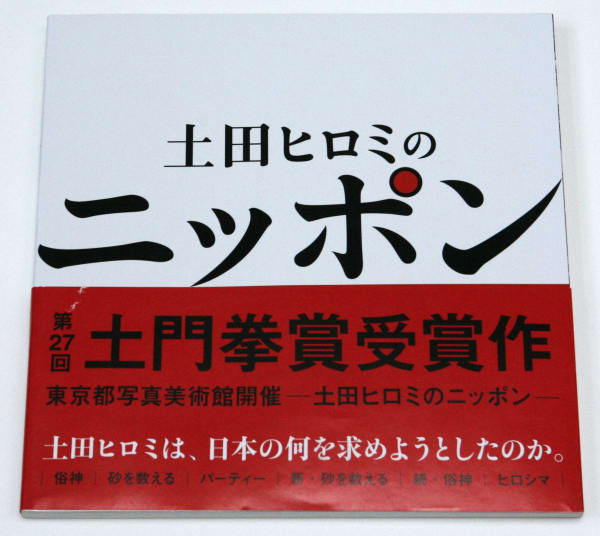
Nippon / Chronicling Japan - Hiromi Tsuchida
Times and People: Urbanization, the bubble, the millennium, the festivals, Hiroshima Hiromi Tsuchida, 2007softcover with obi, 164 pagesRead more
Publisher: The Sankei Shimbun
Dimensions: 250 x 250 mm
-
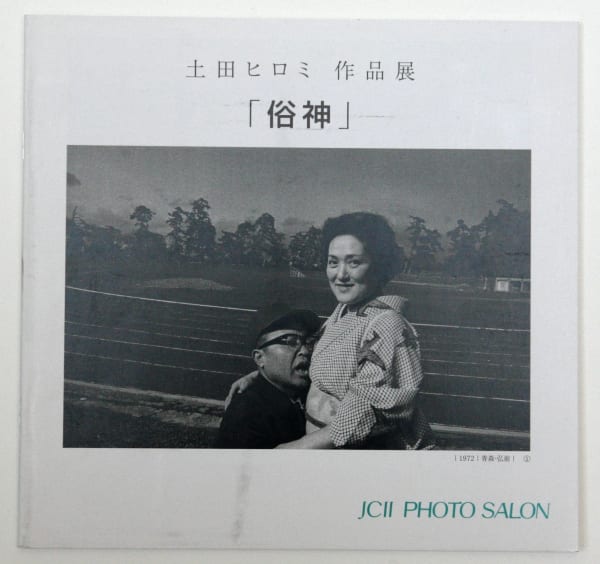
Zokushin - Hiromi Tsuchida
Exhibition catalogue Hiromi Tsuchida, 2010softcover, 23 pagesRead more
Publisher: JCII Photo Salon
Dimensions: 240 x 250 mm -
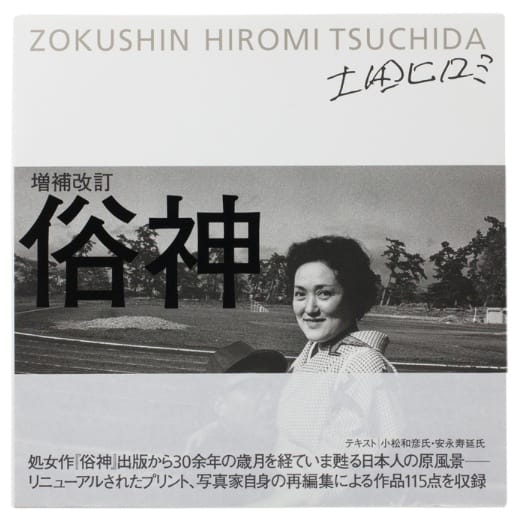
Zokushin - Hiromi Tsuchida
Hiromi Tsuchida, 2004hardcover with dust jacket, 115 pagesRead more
Publisher: Tosei-sha
Dimensions: 297 x 299 mm -

Zokushin - Hiromi Tsuchida
Hiromi Tsuchida, 1976hardcover with dust jacket, 236 pagesRead more
Publisher: Ottos Books Company
Dimensions: 250 x 270 mm
-

#70 Looking back: 10 Years of IBASHO
23 Mar - 18 May 2025We're excited to celebrate a big milestone at IBASHO: 10 years of sharing the beauty of Japanese photography. To mark this special moment, we're hosting a group exhibition “Looking Back:...Read more -

#59 Yōjo - Jeremy Stigter & the IBASHO Collection
3 Jun - 6 Aug 2023IBASHO is delighted to announce the opening of “Yōjo”, an exhibition developed in close collaboration with the Dutch photographer Jeremy Stigter. “Yōjo”, a Japanese concept that can be translated as...Read more -

#51 A Retrospective – Hiromi Tsuchida
26 Mar - 1 May 2022IBASHO is proud to present Hiromi Tsuchida’s solo exhibition ‘ A Retrospective’ . Tsuchida is one of the grand masters of Japanese photography, who has produced unique work since the...Read more
